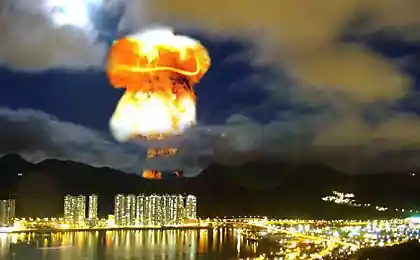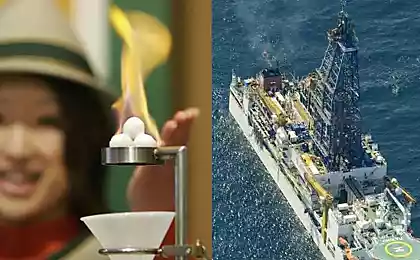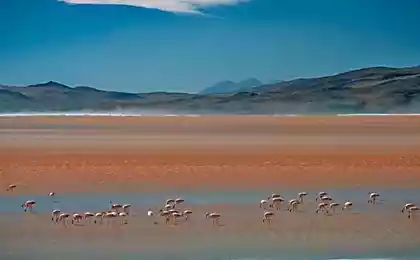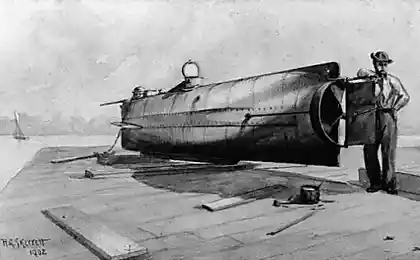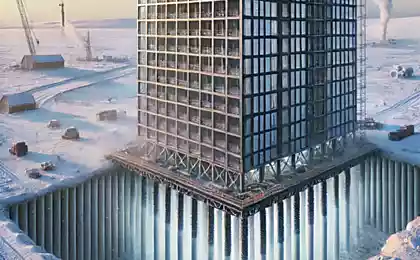196
Scientists have discovered hundreds of places of methane emissions in the Arctic Ocean
In the Chukchi Sea, the first of two stages of the Russian-American-Swedish expedition came to an end, the main result of which was the discovery of more than three hundred places of intensive methane emissions from the ocean floor. According to the participants of the scientific project, these releases can have catastrophic consequences not only for the ecology of the Arctic, but also for the climate of the entire planet.
Cape Barrow was the final point of a 45-day expedition from Norway to Alaska. According to Igor Semiletov, the project manager from the Russian side, all this time specialists from Russia, the United States and Sweden studied the intensity of methane emissions in the Arctic Ocean.
The floating base for the expedition for specialists was the icebreaker Oden. 47 experts followed the Northern Sea Route, studying the shelf of the Arctic seas.
According to the head of the Russian side of the project, this scientific expedition was the next stage of a number of studies that international teams of scientists have been conducting over the past fifteen years.
However, for the first time, a scientific study of mass emissions of simple hydrocarbons in the Arctic seas covered the entire water area of the Northern Sea Route, so it can be called the largest in the history of scientific research. It will allow to study methane releases in all basins of the Arctic seas at once.
Igor Semiletov also stressed that for the first time it was possible to carry out detailed monitoring of the Chukchi and East Siberian seas. This made it possible to detect zones of massive release of dangerous gas in them, which was not previously possible.
In addition, scientists were able to measure the volume of greenhouse gas that is released into the atmosphere. However, the collected data has yet to be processed on shore to assess the magnitude of the danger to Earth.
According to the plan, at Cape Barrow, the composition of the scientific team and crew will be changed, after which the second stage of the research journey will begin. The next stage of the expedition, which will last for 5 days longer, will be devoted to the study of the shelf slope of the Arctic seas. During this time, scientists will have to make geophysical and geological surveys.
Experts will have to determine the validity of the assumption that was put forward by the results of previous international expeditions: methane is released as a result of the destruction of underwater zones of permafrost due to climate change, which, in turn, accelerates the processes of warming.
Source: zeleneet.com
Cape Barrow was the final point of a 45-day expedition from Norway to Alaska. According to Igor Semiletov, the project manager from the Russian side, all this time specialists from Russia, the United States and Sweden studied the intensity of methane emissions in the Arctic Ocean.
The floating base for the expedition for specialists was the icebreaker Oden. 47 experts followed the Northern Sea Route, studying the shelf of the Arctic seas.
According to the head of the Russian side of the project, this scientific expedition was the next stage of a number of studies that international teams of scientists have been conducting over the past fifteen years.
However, for the first time, a scientific study of mass emissions of simple hydrocarbons in the Arctic seas covered the entire water area of the Northern Sea Route, so it can be called the largest in the history of scientific research. It will allow to study methane releases in all basins of the Arctic seas at once.
Igor Semiletov also stressed that for the first time it was possible to carry out detailed monitoring of the Chukchi and East Siberian seas. This made it possible to detect zones of massive release of dangerous gas in them, which was not previously possible.
In addition, scientists were able to measure the volume of greenhouse gas that is released into the atmosphere. However, the collected data has yet to be processed on shore to assess the magnitude of the danger to Earth.
According to the plan, at Cape Barrow, the composition of the scientific team and crew will be changed, after which the second stage of the research journey will begin. The next stage of the expedition, which will last for 5 days longer, will be devoted to the study of the shelf slope of the Arctic seas. During this time, scientists will have to make geophysical and geological surveys.
Experts will have to determine the validity of the assumption that was put forward by the results of previous international expeditions: methane is released as a result of the destruction of underwater zones of permafrost due to climate change, which, in turn, accelerates the processes of warming.
Source: zeleneet.com

